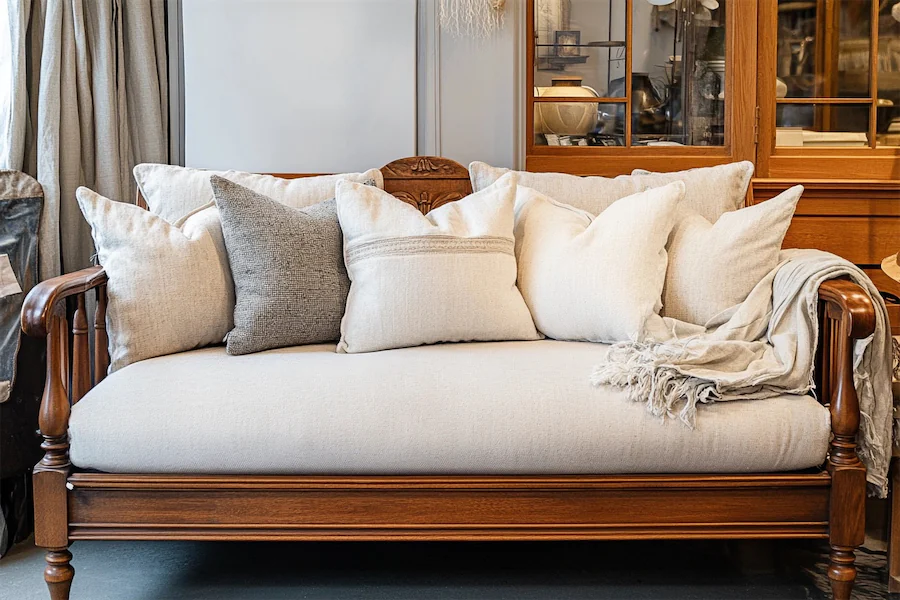A farmhouse sofa embodies the rustic charm and practicality of traditional rural living, seamlessly blending comfort with timeless design.
History and Origins of Farmhouse Sofas
Farmhouse furniture traces its roots to the 17th and 18th centuries in Europe and North America, where pieces were crafted by local artisans using readily available materials like wood and natural fibers. These items prioritized functionality and durability to withstand the demands of daily farm life. Over time, farmhouse furniture evolved, incorporating influences from various design movements while maintaining its core principles of simplicity and practicality.
Key Features of Farmhouse Sofas
- Natural Materials: Constructed from sturdy woods such as oak, pine, or maple, often featuring visible grain patterns that add to their rustic appeal.
- Neutral Color Palette: Upholstered in fabrics with earthy tones like beige, cream, or gray, sometimes accented with muted patterns or stripes to enhance the cozy ambiance.
- Comfort-Focused Design: Emphasis on plush cushions and deep seating to provide a welcoming and relaxed seating experience.
- Slipcovered Options: Many farmhouse sofas feature slipcovers, offering practicality for cleaning and the flexibility to change aesthetics easily.
- Distressed Finishes: Incorporation of weathered or distressed wood elements to evoke a sense of history and timelessness.
Applications of Farmhouse Sofas
- Living Rooms: Serve as the centerpiece in farmhouse-style living spaces, fostering a warm and inviting atmosphere.
- Open-Concept Homes: Complement the spaciousness of open floor plans, adding definition and comfort to communal areas.
- Cottages and Rural Homes: Enhance the rustic charm of country residences, aligning with the overall aesthetic of the home.
Considerations When Choosing a Farmhouse Sofa
- Size and Proportion: Ensure the sofa fits appropriately within your space, considering both the room’s dimensions and the scale of other furnishings.
- Material Durability: Select high-quality, durable fabrics and finishes that can withstand daily use and maintain their appearance over time.
- Comfort Level: Prioritize sofas with supportive cushioning and ergonomic design to enhance comfort for all users.
- Aesthetic Compatibility: Choose a sofa that complements your existing décor, paying attention to color schemes, textures, and overall style coherence.
Conclusion
Farmhouse sofas encapsulate the essence of rustic elegance, offering both functionality and timeless appeal. Their emphasis on natural materials, comfort, and simplicity makes them a versatile choice for various interior settings, from traditional country homes to modern urban spaces seeking a touch of rural charm.
